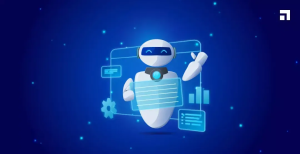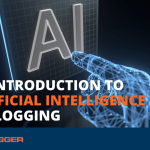Reinforcement Learning: The AI That Learns Like You Do
March 26, 2025 | Chainadmin
Imagine teaching your dog a trick. You don’t give step-by-step instructions—you toss a treat when they sit, and over time, they figure out what works. That’s the heart of reinforcement learning (RL), an area of artificial intelligence (AI) I’ve been exploring this week. It’s about training an AI to make smart choices by trial and error, just like we learn in life. I’ve been digging into terms like “state,” “action,” and “policy,” wrestling with ideas like the Bellman equations, and even building something called a deep Q-learning network. Don’t worry if that sounds like a foreign language—I’m here to translate it into something simple, useful, and relevant to you, whether you’re navigating daily decisions or running a business.
What’s Reinforcement Learning All About?
Think of RL as an AI with a goal but no rulebook. Instead of being spoon-fed answers, it learns by doing—taking actions, seeing what happens, and adjusting based on rewards or setbacks. Picture yourself playing a video game for the first time. You’re in a state (say, Level 1), you pick an action (jump over a gap), and you get a return (points if you make it, a fall if you don’t). Over time, you develop a policy—a strategy for what works best. That’s RL in a nutshell: the AI explores, learns, and gets smarter with every move.
I’ve been studying the nuts and bolts—like the Bellman equations, which are just a fancy way of saying “learn from the past to plan the future,” and the state-action value function, which helps the AI weigh how good each choice might be. It’s less complicated than it sounds—think of it as the AI asking, “If I do this now, what’s the payoff down the road?”
Real Life: Logical Learning
Let’s bring it home. Ever tried finding the fastest route to work? You start in a state (home), take an action (try the highway), and get a return (arrive in 20 minutes—or 40 if traffic’s bad). After a few tries, you settle on a policy (back roads on weekdays, highway on weekends). That’s RL at play in your brain. Now imagine an AI doing it for you—your GPS could test routes, learn from traffic patterns, and suggest the best path without you sweating the trial and error.
For individuals, RL is already sneaking into your life. Smart thermostats tweak temperatures based on what keeps you comfy while saving energy. Robot vacuums stumble around at first, but soon map your house like pros. It’s AI learning on the fly—making your days easier without you noticing.
Loving these AI insights? Get simple, real-world tips like this every week—sign up for my newsletter!
[Join Now]
Business Boost: Smarter Decisions, Bigger Wins
Now, let’s talk business. RL isn’t just for gadgets—it’s a powerhouse for optimizing operations and outsmarting competition. Say you own a coffee shop. You’re juggling states (busy mornings, slow afternoons), actions (offer discounts, tweak staffing), and returns (profit or loss). An RL system could test strategies—like discounting lattes at 2 p.m.—and learn what maximizes your revenue. I built a deep Q-learning network this week, which uses a neural network (an AI brain) to handle complex scenarios like this. It’s like giving your business a coach that never sleeps.
Take warehouses: Amazon uses RL to train robots to pick and pack orders. The AI starts clueless, but after trial and error—guided by rewards like speed and accuracy—it masters the job. For a small business, RL could optimize delivery routes, cutting fuel costs, or adjust pricing dynamically to beat slow sales days. The continuous state spaces I studied (think infinite possibilities, not just “busy or slow”) mean it can handle real-world messiness—like unpredictable customer demand or weather delays.
Ready to bring RL to your business but not sure where to start? Let’s chat about making AI work for you—no tech headaches.
[Book a Call]
Why It’s a Game-Changer
Here’s the kicker: RL doesn’t need a manual—it thrives in uncertainty. Traditional AI might need tons of examples to learn (e.g., “here’s fraud, here’s not”). RL just dives in, experiments, and figures it out. That’s huge for businesses facing new challenges—like a startup testing marketing tactics or a retailer adapting to a post-pandemic world. The state-action value function I explored helps the AI prioritize long-term wins over quick fixes, so your coffee shop doesn’t just survive a slow week—it thrives all year.
The Catch: Patience and Power
There’s no free lunch, though. RL takes time—tons of tries to get good—and computing power, especially for deep Q-learning, which I coded to tackle big, tricky problems. For individuals, that’s why it’s baked into products you buy, not something you’d whip up at home. Businesses can tap into cloud platforms like AWS or Google Cloud to run it without breaking the bank. Start small—test it on one process, like inventory—and scale up as it pays off.
AI as a Necessity, Not a Nice-to-Have
Let’s get blunt: Ignoring RL puts you at risk. Competitors using it will outpace you—delivering faster, pricing smarter, and adapting quicker. In 2025, it’s not about keeping up; it’s about not going under. RL-driven companies are already cutting costs by 20% and boosting efficiency, per industry stats. Whether you’re an individual wanting a smoother life or a business owner chasing profit, this tech is your edge.
Your Next Step
Reinforcement learning is AI learning like we do—through experience. For you, it’s fewer headaches; for your business, it’s sharper strategies. Ever notice your apps getting eerily good at predicting your needs? That’s RL in action. Want to harness it? Grab my free “AI for Real Wins” guide, or let’s talk about bringing RL to your operation—no tech degree needed. Don’t wait—your next big win might be one smart choice away.
Want more? Grab my free ‘AI for Real Wins’ guide and see how RL can boost your life or business!
[Download Now]









